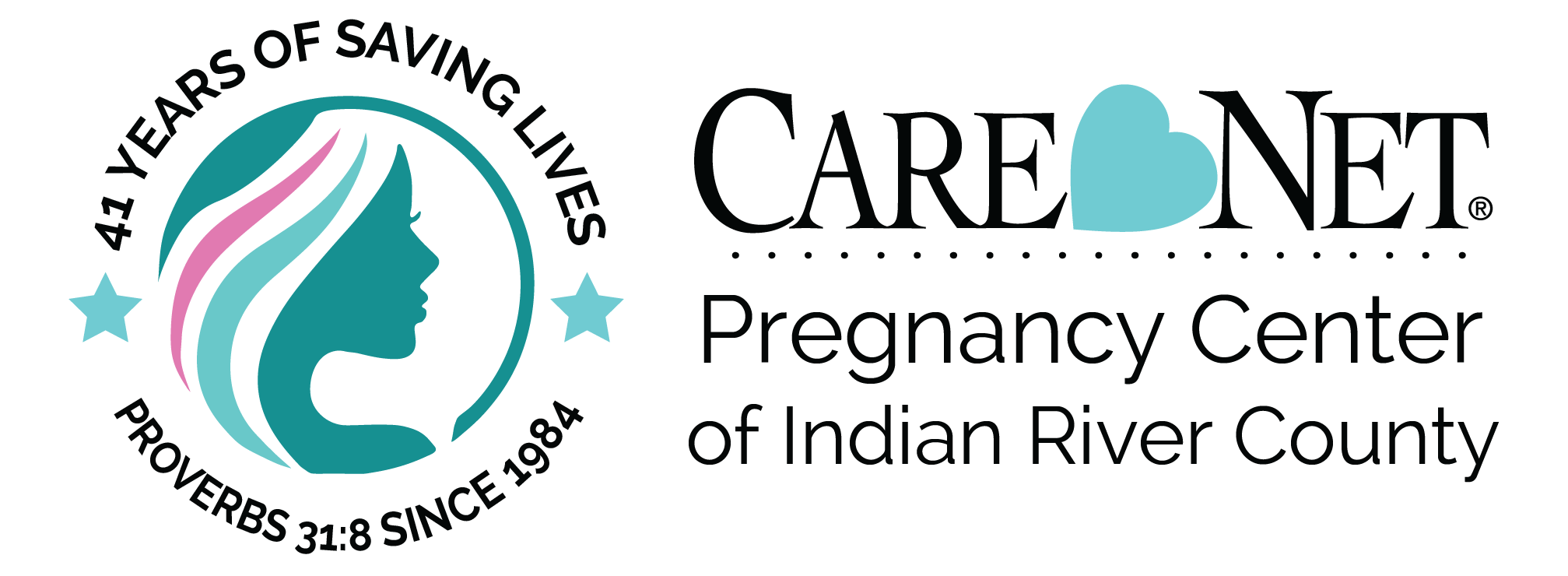In July 2020, an Alabama mother went into labor just 5 months after conceiving. Just over a year later, Curtis Means received the Guinness World Record for being the youngest preemie ever to survive, born at 21 weeks 1 day. (SOURCE: University of Alabama Birmingham)
From the NICU to 4D ultrasounds, modern medical technology gives us numerous ways to see that the preborn are very much alive and unique human beings. For example, babies can receive blood transfusions as early as 18 weeks gestation, proving them to be individual patients (SOURCE: Blood Transfusion journal, ProLifeDoc).
But medical jargon can make milestones in a preborn child’s development confusing to understand, and even harder to explain. Let’s break down the stages of fetal development.
Methods of Tracking Prenatal Development
One of the most confusing aspects can be the use of two timelines: one based on the mother, and the other based on the child.
Gestational age is the most common measurement. It counts the number of weeks since the first day of the mother’s last menstrual period (LMP), which usually happens 2 weeks before the child is conceived. Despite the gap, LMP is the most discernible day to determine when pregnancy began, so it is used to calculate the baby’s due date.
Another method for tracking the child’s development is fetal age. This is measured by counting post-conception weeks (PCW), or how many weeks since conception, when the new life was actually created and began to grow (SOURCE: Lozier Institute). PCW is technically more precise, but because conception happens on a microscopic level, it’s really an estimate unless the pregnancy is being facilitated by a fertility clinic. This makes PCW less practical for the mother and her doctor to track her pregnancy, but it comes in handy for embryologists studying fetal development.
In this blog, we’ll track development using the LMP method, which is used by OB/GYNs.
Fetal Development Timeline
1st Trimester
2 Weeks per LMP / Conception Day!
- Sperm and egg unite in a fallopian tube to create a single-celled baby (called a zygote). Zinc enzymes emit a flash of light at the moment of fertilization, as a new human life begins! (SOURCE: U.S. News & World Report)
- The HCG hormone, indicating pregnancy, is present in a woman’s bloodstream from the moment of conception, although it takes around 10 more days to show up on a home (urine-based) pregnancy test. (SOURCE: Cleveland Clinic)
- Germinal stage of development begins.
- Cell division begins within 36 hours of conception

3 weeks gestation / 7 days PCW
- The baby implants in his or her mother’s uterus close to a week after conception.
- By 3 weeks 1 day, the baby is the size of the period at the end of this sentence.
4 weeks gestation / 14 days PCW: Baby is the size of a poppy seed
- Mother notices a missed period.
- Home pregnancy test begins working.
- Baby is now called an embryo! (Begin embryonic stage).
5 weeks gestation / 21 days PCW: Baby is half the size of a pinky nail.
- Heart is the size of a poppy seed and becomes the first organ to function.
- At the end of week 5 / beginning of week 6, baby’s heartbeat is visible and audible on an ultrasound! (SOURCE: Cleveland Clinic)
- Foundation for every other major organ system is established.
6 weeks: ⅛ inch long
- Arm and leg buds form.
- Blood begins to circulate in Baby’s body.
- Head and some facial features visible.
- Foundation for the central nervous system has formed (brain and spinal cord).
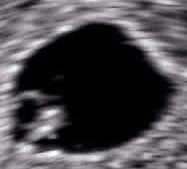
7 weeks: ⅓ inch long
- Baby makes his or her own blood.
- Sex organs start to form.
- Bones form.
- Buds for baby teeth form in Baby’s jaw.
8 weeks (ends Month 2): ½ inch long,
size of black bean
- Elbows and fingers visible.
- Ears begin to form.
- Brain cells, called neurons, begin to connect via synapses and form a neural network. (SOURCE: Very Well Mind)
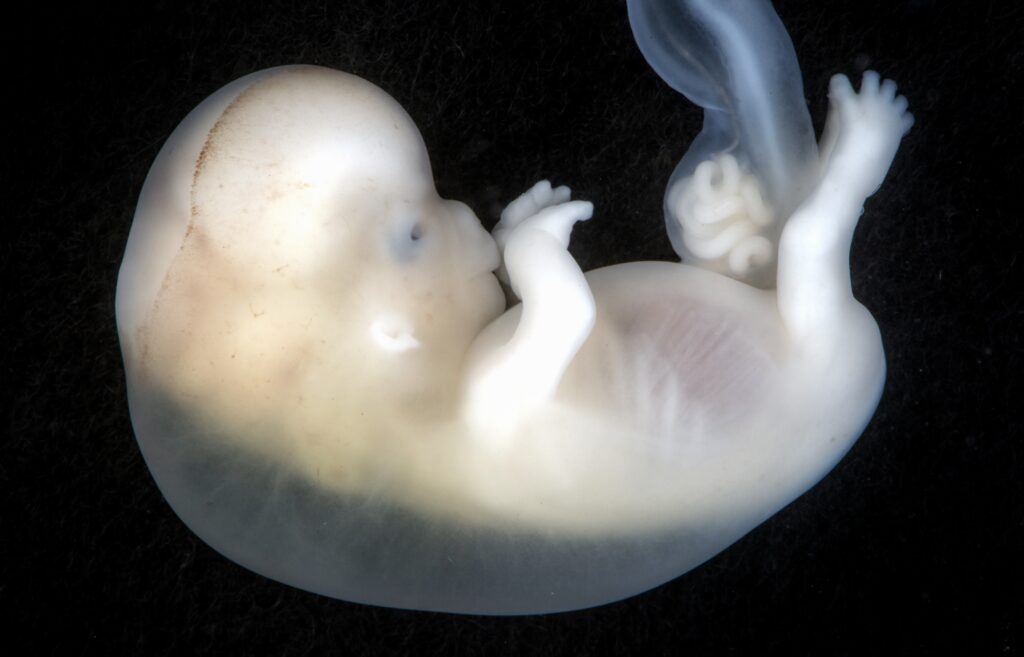
9 weeks: ¾ inch long, size of a small seahorse, weighs ⅛ oz.
- Bones beginning to calcify.
- Taste buds form.
10 weeks: 1 inch long
- End of 10 weeks is beginning of fetal stage (fetus = Latin for “young one”)
- All organs are formed!
- 250,000 neurons form every minute. (SOURCE: Discovering the Brain)
- If Baby is a boy, he begins producing testosterone.
- Fingers, toes, hands, arms and feet are fully formed.

11 weeks: 2 inches long
- Eyelids fully formed.
- Baby begins to move, although he or she is too small to feel.
- Bones start to harden.
- Knee, elbow and ankle joints working.
12 weeks (ends month 3, end of first trimester): By end, Baby is size of a plum, 2.5-3 inches long
- Morning sickness decreases.
- Smaller chance for miscarriage and birth disorders through the end of pregnancy.
- Baby can swallow and urinate amniotic fluid.
2nd Trimester
Month 4 (Weeks 13-16, beginning of second trimester): size of an avocado, 5 inches long
Vocal cords form.
Baby begins to suck thumb and turn its head.
Skin starts to thicken.
Fine hair begins to grow.
Some organs move to permanent locations.
Baby makes purposeful movements like smiling.
Heart pumps 26 gallons of blood every day. (SOURCE: Focus on the Family: The First Nine Months)
If Baby is a girl, millions of eggs are forming in ovaries.
Baby can hear parents talking and reacts to light.
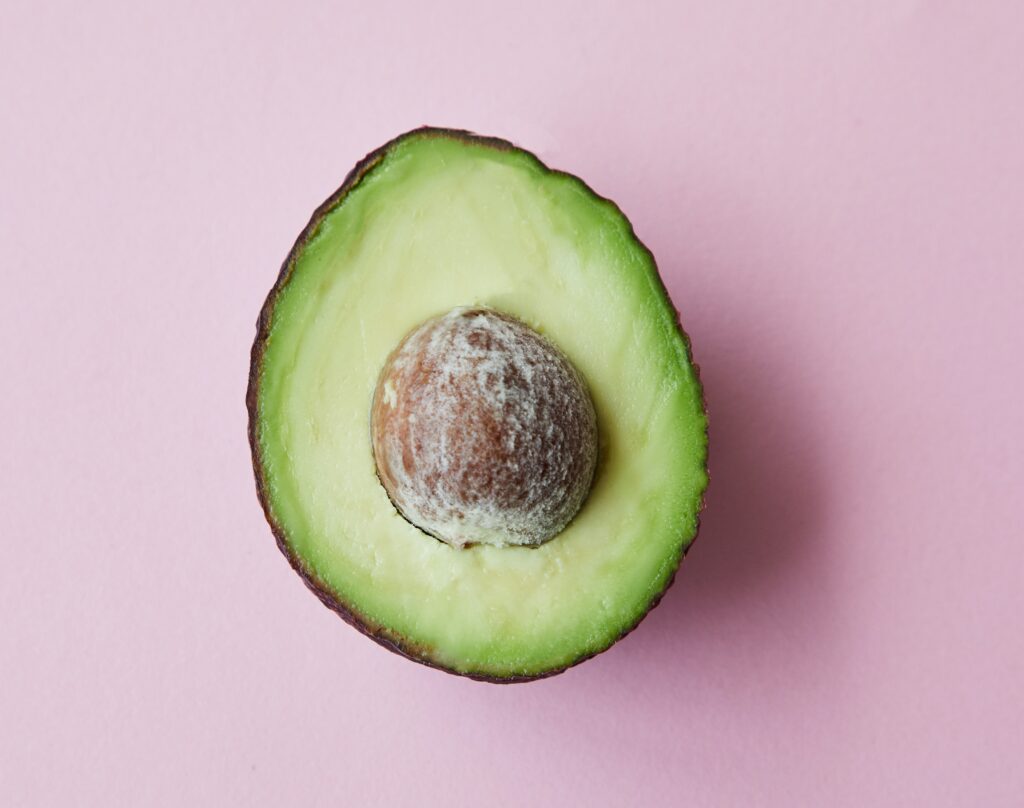
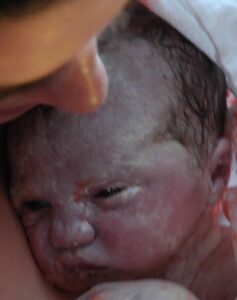
Month 5 (Weeks 17-20): 9-10 inches long, 1 lb.
- Baby’s skin is coated with a substance to protect it from the amniotic fluid.
- Skeleton visible on ultrasound.
- Baby can blink, frown and hiccup.
- Baby has unique finger and toe prints.
- Mama feels Baby’s movements for the first time (“quickening”).
- Baby has a wake and sleep pattern and favorite sleeping position; he or she is awakened by loud noises.
- From 20-32 weeks, Baby can potentially feel pain more intensely than during any other stage of life. (SOURCE for more information about in utero pain: WebMD)
- Area of the brain that processes the five senses begins to develop.
Month 6 (Weeks 21-24): 12 inches, 2 lbs.
- Bone marrow can produce blood cells.
- At 21 weeks 1 day, Curtis Means became the most premature baby to survive after birth! Many babies can survive outside of the womb, in the NICU, by 23 weeks.
- Hair is visible on Baby’s head.
- Ultrasound is generally done to reveal Baby’s gender between 18-21 weeks. (SOURCE: Healthline)
- Baby hears Mama’s lungs breathe, heart beat and stomach rumble. He or she also recognizes Mama’s voice!
- Lungs are fully developed, but have a hard time breathing outside of the womb.
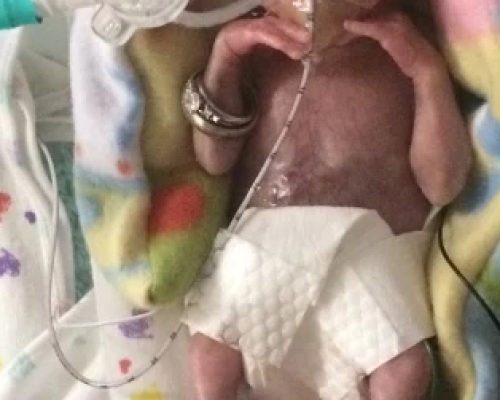
Month 7 (Weeks 25-28, end of second trimester): 14-15 inches long, 2-3 lbs.
- As Baby gains body fat, his or her skin becomes less wrinkly.
- Baby reacts to loud sounds outside Mama’s body. (SOURCE: Medline)
- Permanent teeth buds are in place.
- Melanin colors Baby’s eyes and skin.
- Eyelashes and brows are well-formed.
- Baby can blink his or her eyes.
- Baby’s brain coordinates rhythmic breathing and body temperature.
3rd Trimester
Month 8: (Weeks 29-32, beginning of third trimester): 17-18 inches long, weighs up to 5 lbs.
- Movements feel more like pokes as Baby’s room gets more cramped.
- Lungs are prepared to breathe after birth.
- Baby has eyelashes.
- Starting to turn his or her head down in preparation for birth.
- Skin is no longer translucent.
Month 9 (Weeks 33-36): Baby is 17-19 inches long, weighs 6-7 lbs
- Baby’s bones are hardening, but the brain is not so it can go through the birth canal.
- Pupils constrict if light shines into his or her eyes.
- Head covered with hair.
- Baby’s brain only weighs 1/3rd of what it will at birth.
Month 10 (Weeks 37-40): by birth, Baby is 18-20 inches long, weighs 7-9 lbs.
- Skin protection gets thicker.
- Baby is full term and head-down in Mama’s pelvis, waiting to greet the world!

Explore the Amazing Science Behind Prenatal Development
This timeline is a simplified explanation of what happens in the womb. Check out our Resources page, via the blog tab, for more in-depth resources like Live Action’s Baby Olivia and the Lozier Institute’s Voyage of Life. If you or someone you know is pregnant, get notifications of weekly fetal development markers on the See Baby app or from the American Pregnancy Association. The more you know, the more you can share!
About the Blogs:
Care Net is committed to helping women make decisions that are Biblically based and factually correct. We believe our Champions deserve access to the same kind of information!
In this blog series, we present research related to abortion and the pro-life movement that is easily accessible and shareable. Click here for more.
